Green Sea Turtle
- April 2, 2024
- 0 comment
The green sea turtle, an emblem of marine grace and resilience, is a captivating creature inhabiting tropical and subtropical waters across the globe. Known scientifically as Chelonia mydas, these majestic turtles boast a distinctively smooth, tear-drop-shaped shell, adorned with hues ranging from olive to brown, and even black. Their name, however, derives not from their shell color but from the greenish tint of their fat, a result of their herbivorous diet dominated by sea grasses and algae. Their paddle-like limbs propel them gracefully through coastal waters, coral reefs, and serene seagrass beds, where they play a pivotal role in maintaining the health of these ecosystems.

With a lifespan that can exceed 80 years, these ancient mariners undertake incredible migrations for breeding and nesting, returning to their natal beaches to lay eggs in carefully dug nests. Yet, despite their endurance and adaptability, green sea turtles face an array of threats, from habitat loss and pollution to illegal harvesting and accidental capture in fishing gear. Conservation efforts are essential to safeguard these iconic creatures and ensure their continued presence in our oceans. Through education, awareness, and concerted action, we can protect the green sea turtle and preserve its place in the tapestry of marine life for generations to come.
| Aspect | Description |
|---|---|
| Scientific Name | Chelonia mydas |
| Common Name | Green Sea Turtle |
| Shell Color | Varies from olive to brown, sometimes with black highlights |
| Size | Adults typically range from 3 to 4 feet in length, weighing 300 to 350 pounds |
| Habitat | Found in warm coastal waters, coral reefs, seagrass beds, and lagoons |
| Diet | Primarily herbivorous, feeding on sea grasses, algae, and other marine plants |
| Lifespan | Can live for over 80 years in the wild |
| Reproduction | Females return to their natal beaches to lay eggs, nesting in sandy shores |
| Conservation Status | Listed as an endangered species due to habitat loss, pollution, and illegal trade |
| Importance in Ecosystem | Plays a crucial role in maintaining the health of marine ecosystems as a herbivore |
| Threats | Habitat destruction, pollution, illegal harvesting, and accidental capture in fishing gear |
| Conservation Efforts | Protected nesting beaches, research and monitoring, rehabilitation programs, public awareness campaigns |
Green Sea Turtles
Green sea turtles, scientifically known as Chelonia mydas, are one of the most iconic marine creatures. With their distinctive greenish-colored fat and graceful swimming abilities, they captivate the imagination of people worldwide.
Physical Characteristics
The physical characteristics of green sea turtles include a smooth, tear-drop-shaped shell (carapace) that varies in color, ranging from shades of green, olive, brown, to black. They have paddle-like limbs and a serrated beak, which aids in grasping and tearing sea grasses and algae, their primary diet. Additionally, green sea turtles have a streamlined body shape, enabling them to navigate gracefully through their marine habitat.


Shell Coloration
The shell coloration of green sea turtles varies, but it generally encompasses shades of green, olive, brown, or black. This coloration provides camouflage within their marine habitat, helping them blend in with their surroundings and evade potential predators. Interestingly, despite their name, not all green sea turtles have green shells; some individuals exhibit hues closer to brown or black.
Habitat and Distribution


Green sea turtles inhabit warm coastal waters, coral reefs, seagrass beds, and lagoons around the world, primarily in tropical and subtropical regions. They are commonly found in regions such as the Caribbean Sea, the Gulf of Mexico, the Pacific and Atlantic Oceans, the Indian Ocean, and the Mediterranean Sea. These turtles have a wide distribution, with populations existing in various marine environments, including nearshore habitats and offshore islands. However, they are particularly abundant in areas with ample seagrass beds, which serve as important foraging grounds for these herbivorous reptiles.
Additionally, green sea turtles undertake extensive migrations between nesting and foraging grounds, traveling vast distances across oceans to fulfill their life cycle requirements. Their ability to adapt to different coastal and marine habitats contributes to their widespread distribution across the globe.
Diet and Feeding Habits
Green sea turtles are primarily herbivores, feeding on seagrasses, algae, and other marine plants. Their diet plays a crucial role in maintaining the health of marine ecosystems, as they graze on underwater meadows and promote the growth of seagrass beds.
Foraging Behavior
Green sea turtles use their strong jaws to shear vegetation, grazing on seagrass beds and algae-rich areas. They are known to migrate long distances between feeding grounds, utilizing coastal areas, coral reefs, and seagrass beds for foraging purposes

Life Cycle and Reproduction
Female green sea turtles return to their natal beaches to lay eggs, digging deep nests in the sand and laying clutches of eggs. After a two-month incubation period, hatchlings emerge from the nests and make their way to the sea. Only a small percentage of hatchlings survive to adulthood, facing numerous predators along the way.
Nesting Process
During the nesting season, female green sea turtles crawl ashore to lay their eggs in carefully dug nests. They dig deep holes in the sand using their flippers and lay their eggs before covering the nest and returning to the sea. Nesting beaches are critical for the survival of green sea turtles, and human disturbances can impact nesting success.

Conservation Status
Green sea turtles are classified as endangered species due to various threats, including habitat loss, pollution, illegal harvesting, and accidental capture in fishing gear. Conservation efforts are crucial for their survival, focusing on protecting nesting beaches, reducing human impacts, and implementing measures to mitigate threats.
Legal Protections
Many countries have implemented laws and regulations to protect nesting beaches and foraging areas for green sea turtles. International agreements, such as the Convention on International Trade in Endangered Species (CITES), also aim to regulate and monitor the trade of green sea turtle products. Additionally, efforts to establish marine protected areas and conservation initiatives help safeguard critical habitats for these endangered reptiles.

Threats to Green Sea Turtles
The biggest threats to green sea turtles include:
- Habitat Destruction: Coastal development and pollution degrade nesting beaches and foraging habitats.
- Illegal Harvesting: Poaching for their meat, eggs, and shells remains a significant concern.
- Climate Change: Rising temperatures affect nesting success and alter marine ecosystems.
- Bycatch: Accidental capture in fishing gear, such as trawls and gillnets, leads to injuries and mortality.
Efforts in Conservation
Numerous organizations and initiatives are dedicated to conserving green sea turtles. These efforts include:
- Nesting Beach Protection: Implementing measures to safeguard nesting sites from human disturbance.
- Research and Monitoring: Studying population dynamics, migration patterns, and habitat use to inform conservation strategies.
- Rehabilitation and Rescue: Rescuing and rehabilitating injured turtles and releasing them back into the wild.
- Public Awareness: Educating local communities and tourists about the importance of sea turtle conservation.
The Role of Humans in Protecting Green Sea Turtles
Individuals can contribute to green sea turtle conservation by:
- Reducing Plastic Pollution: Properly disposing of plastic waste to prevent ingestion and entanglement.
- Supporting Sustainable Fishing Practices: Choosing seafood caught using methods that minimize bycatch.
- Participating in Volunteer Programs: Joining beach clean-ups and nesting surveys to support conservation efforts.
- Advocating for Policy Change: Supporting legislation and policies that protect sea turtle habitats and regulate fishing activities.
Interesting Facts about Green Sea Turtles
- Green sea turtles can hold their breath for several hours.
- They have a magnetic sense that helps them navigate during migrations.
- Despite their name, not all green sea turtles have green shells; some exhibit shades of brown or black.
- Green sea turtles can live for over 80 years in the wild.
- Their nesting behavior is synchronized with lunar cycles.
Importance of Green Sea Turtles in Ecosystems
As herbivores, green sea turtles play a crucial role in maintaining the health of marine ecosystems. Their grazing activities promote the growth of seagrasses, which serve as habitats and nurseries for numerous marine species.
Interactions with Humans
Green sea turtles have long held cultural significance in many coastal communities. However, human activities pose significant threats to their survival. Responsible tourism and sustainable fishing practices are essential for minimizing negative impacts on these majestic creatures.
Educational and Awareness Programs
Educational initiatives and outreach programs play a vital role in raising awareness about the conservation status of green sea turtles. By fostering a deeper understanding of their ecological importance, these efforts inspire individuals to take action to protect them.
Different Species

However, it’s important to clarify that the term “green sea turtle” typically refers to a single species, Chelonia mydas.
Frequently Asked Questions (FAQs)
- Are green sea turtles endangered?
Yes, green sea turtles are classified as endangered species due to various threats, including habitat loss, pollution, and illegal harvesting. - Where do green sea turtles live?
Green sea turtles inhabit warm coastal waters, coral reefs, seagrass beds, and lagoons primarily in tropical and subtropical regions around the world. - What do green sea turtles eat?
Green sea turtles are primarily herbivores, feeding on sea grasses, algae, and other marine plants. - How long do green sea turtles live?
Green sea turtles can live for over 80 years in the wild. - How do green sea turtles reproduce?
Female green sea turtles return to their natal beaches to lay eggs in carefully dug nests, typically during the nesting season. - How many eggs do green sea turtles lay?
Female green sea turtles can lay multiple clutches of eggs throughout the nesting season, with each clutch containing around 100 to 200 eggs. - What are the main threats to green sea turtles?
The main threats to green sea turtles include habitat destruction, pollution, illegal harvesting for meat and shells, and accidental capture in fishing gear. - How can I help protect green sea turtles?
Individuals can support green sea turtle conservation efforts by reducing plastic pollution, supporting sustainable fishing practices, participating in volunteer programs, and advocating for policy change. - What is the role of green sea turtles in marine ecosystems?
Green sea turtles play a crucial role in maintaining the health of marine ecosystems as herbivores, promoting the growth of seagrasses and maintaining biodiversity. - Can I swim with green sea turtles?
Swimming with green sea turtles can be a rewarding experience, but it’s important to do so responsibly and without causing disturbance to the turtles or their habitats.


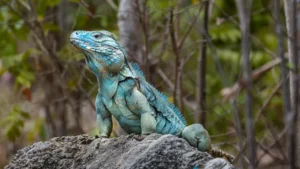
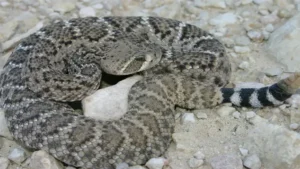
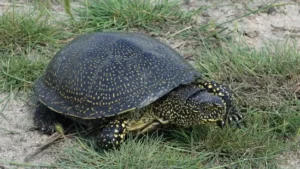

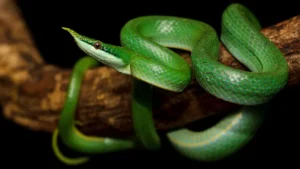
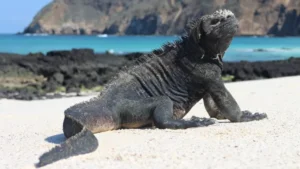


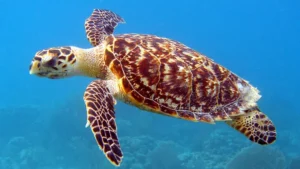
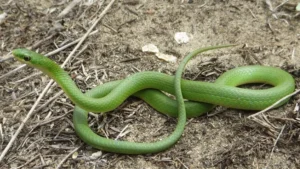
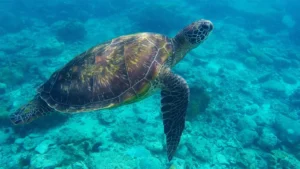

Leave your comment